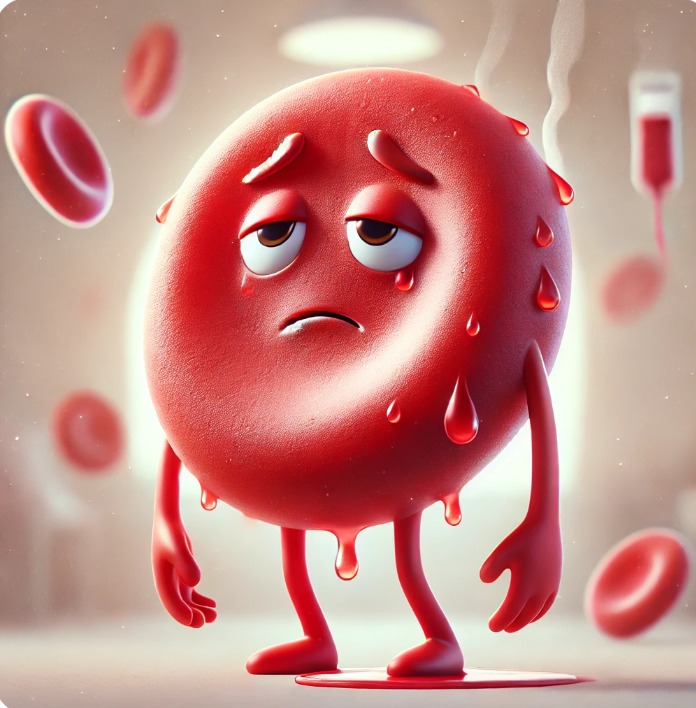
You probably haven’t heard of this disease. I hadn’t heard of it until I got my diagnosis last January. It’s commoner in the UK and Ireland than anywhere else on earth.
About a third of a million people in Britain have it. It causes arthritis, joint pain, diabetes, fatigue, brain fog, cognitive impairment, depression, skin conditions, menstrual problems in women, impotence, breathing and heart problems, abdominal pain, liver problems and hair loss. Professor David Melzer, from Exeter University, found that people with this condition have four times the risk of liver disease, twice the risk of arthritis and frailty among older age groups, and a 50% higher risk of pneumonia and diabetes.
And yet, according to the Newcastle NHS Trust, out of 250,000 with the genetic predisposition for this disease, only 5,000 have been diagnosed.
We’re talking about hereditary haemochromatosis (HH). People with HH, like me, have inherited two copies of the HFE gene mutation, one from each of their parents. If you have one copy of the HFE mutation, you’re fine. But if you have two, the switch which tells your body to absorb iron from food gets stuck in the ‘on’ position. In time, this can lead to iron overload, organ damage and that catalogue of symptoms.
The HFE mutation is most common among northern Europeans, especially those with Celtic ancestry. Hence the nickname for HH – the Celtic Curse. Anthropologists from Indiana and Utah studied the mutation’s frequency across Europe and concluded that the gene mutation evolved 6000 years ago as an adaptation to cold, wet weather. Pre-menopausal women with the mutation are less likely to progress to iron overload than their male counterparts, because menstruation reduces their body’s iron stores.
I found that I had HH because I am a lucky chappie. I told my GP that I was tired and achy. I said, “I feel like I’m ageing at 10 times the normal speed.” But instead of advising me to eat more greens, go to bed on time and lose weight, she tested my blood for iron deficiency anaemia. It turned out that my iron (ferritin) level wasn’t deficient; it was three and a half times over the limit. So a haematologist tested me for the double HFE mutation (positive) and an MRI checked my liver for iron overload (also positive).
The good news for me is that HH is easy to treat: I give half a litre of blood as often as needed to get the iron out of my body: weekly for the first three months and then monthly. A haematologist monitors my ferritin. Her target is to reduce it from 1050 nanogrammes per millilitre to 50. The final goal is to lower the iron levels in my internal organs, especially my liver, in order to prevent further damage.
By the time I was diagnosed, I’d already had a ‘silent’ stroke. Was HH the cause? A study of over 9,000 people in Denmark found that people with two copies of the H63D genetic mutation for hemochromatosis had a 2.1 to 2.8 times higher risk of ischemic stroke and cerebrovascular disease. In other words, the double H63D mutation had been pretty much as bad for me as smoking a pack a day would have been.
Yes, I’m lucky. The stroke was minor and my HH was diagnosed before serious organ damage kicked in. But what about the other 250,000 British people who are unaware of their double HFE mutation? The problem is that the signs of HH – fatigue and aches – can be blamed on stress, diet, lack of exercise, ageing, bad sleep habits – or any other aspect of 21st century life. Even high ferritin levels are often due to lifestyle factors. So, a GP may only suspect HH if the patient reports a close relative with the HFE mutation. Many HH sufferers may be walking out of their GP’s surgery with a recommendation to eat better, take exercise and relax.
The charity Haemochromatosis UK seems to have very low expectations of public medicine. Noting that getting a diagnosis on the NHS can be a ‘struggle’, its website recommends private genetic testing – at 49 pounds a pop for members. In a curious reversal of the norm, the charity also provides information packs for patients to distribute to medical professionals. Is there any other common and serious medical condition in the UK where the recommendation is to go give up on the NHS and go private?
Haemochromatosis UK believes that HH is common and harmful enough to justify genetic screening on the NHS. At the least, they argue, we should all have ferritin screening from the age of 40 as part of the NHS Health Check. However, the UK National Screening Council found in 2021 that there is insufficient clinical evidence to justify screening. According to the minutes of the All-Party Parliamentary Group on Genetic Haemochromatosis, the problem isn’t a lack of money. It’s that “there appears to be a resistance in sections of the clinical community to screening for various reasons.”
So, will hereditary haemochromatosis remain the UK’s biggest unknown disease? Will only the lucky few – like me – get a diagnosis? For now the answer is probably – yes.
Sources:
www.newcastle-hospitals.nhs.uk
Neurology, March 27, 2007
https://view-health-screening-recommendations.service.gov.uk/haemochromatosis
